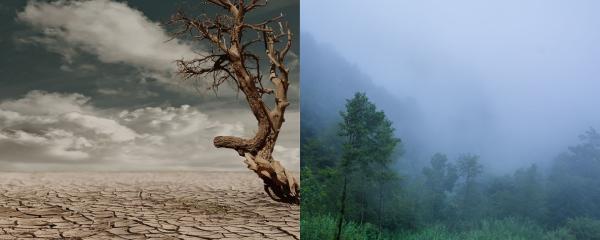
IIT Palakkad study shows how different indices used to predict drought combined with effects fof climate change can lead to different climate predictions for the future

IIT Palakkad study shows how different indices used to predict drought combined with effects fof climate change can lead to different climate predictions for the future
A rising population demands an upgrade to the infrastructure of towns and cities, failing which congestion and traffic jams become unavoidable. The situation is improved with efficient allocation of resources and infrastructure, usually achieved with the help of computer simulations. Through simulations, one can predict the outcome of complex situations which allows us to implement the best solution always. Road transportation depends on efficiently moving of vehicles between intersections.
Today, India’s space programs command the world’s respect for a multitude of things -- our Mangalyaan mission was the cheapest ever, we recently launched about 108 satellites into space with a single rocket, our Chandrayaan mission is making fantastic discoveries on the Moon, we launched our own space based observatory with Astrosat...the list goes on. But when the country started its space program, it had very humble beginnings that are hard to believe. It required the courage and determination of many intellectuals and Prof. U R Rao is one of those who scripted a new chapter in India’s history of space research. Here is an orbituary piece dedicated to the life of a great visionary that we just lost amongst us.
Hepatits C, caused by the hepatitis C virus (HCV), is an infectious disease affecting over 140 million people around the world. The virus spreads by blood to blood contact, affecting the liver and causing infections, which if left untreated could lead to cancer. Intravenous drug use and blood donations have been found to be the two main causes for the spread of the virus and can also spread from an infected mother to her children. In India, it is estimated more than 8 million people suffer from HCV.
The mangrove ecosystem is a fragile ecosystem found in the tropical and subtropical sea shores and houses a variety of plants and animals. Some of these have evolved special adaptation techniques to thrive in the salt-rich low-in-oxygen soil, and have supported human communities around the forests. Today, on the occasion of the ‘International Day for the conservation of the mangrove ecosystem, here is a snapshot of the importance of mangroves and why conserving them is the need of the hour today.
Insects were the pioneers of flight on the planet, having developed wings early in their evolutionary history. Today, though a wide range of insects can claim this distinction, some, like the dragonfly, have exemplified this act. Despite their mastery and long history, knowing how such insects have achieve complex moves mid-flight, remains a mystery.
The Earth is a planet we share with a billion of other living animals and plants. Often, we encounter them everyday, use them as food, shelter or clothes, and interact with them as pets or pests. A new term of such interactions, at times, is called ‘conflicts’ where sharing the area we live with wild animals becomes a bane. These animals are often dangerous, causing widespread damage to crops, livestock and lives. How do we prevent this? What can people do to minimise such conflicts? A study now attempts to look at ways of addressing human-animal conflicts in the fringes of the forests in India.
Getting stuck in a huge traffic jam is a tragedy, especially if you live in cities like Bengaluru, Mumbai or Delhi. The rising number of vehicles are increasingly adding to this problem, depriving us of our time, money and health. A new research now attempts to reduce traffic pileups in cities by using videos of surveillance cameras. Using Artificial Intelligence and Convolutional Neural Networks, the researcher have built TraCount, a system that can count the number of vehicles in a traffic jam and help authorities manage the congestion in a smart and informed way.
A visit to a doctor for minor ailments may soon be a thing of the past, with rapid rise in medical technologies. Nowadays, a smartphone can help with disease diagnosis and contacting the relevant specialists from around the world, all from the comfort of one’s home. Mobile Healthcare or mHealth has been significantly advanced with the advent of Internet of Things, where sensors can feed live data to specialists, who can monitor patients from miles away. This rapid rise of mHealth has some worried about the security aspects of the software.
What if a shoe could save your life when you are stuck in a building that is burning down? Though it sounds like a science fiction, the OpenShoe project aims to do exactly that! Built on a novel navigation technology called Inertial Navigation System (INS), researchers have built a minute navigation module that can be plugged into a shoe to track every step to the accuracy of a centimeter! Such foot-mounted systems help in tracking objects in the absence of satellite based navigation and would complement the widely used satellite based navigation systems, say the researchers.
Ever since its emergence as a field of science in the 1980’s, Nanotechnology has seeped into every aspect of our lives. From embedded in toothpaste to materials space shuttles are made of, nanoparticles can be found on earth, on the surface and floating in the atmosphere. Accidentally consuming a few nanoparticles either while breathing or eating is all but unavoidable. But the effects of these nanoparticles on the human body haven’t yet been been fully understood.